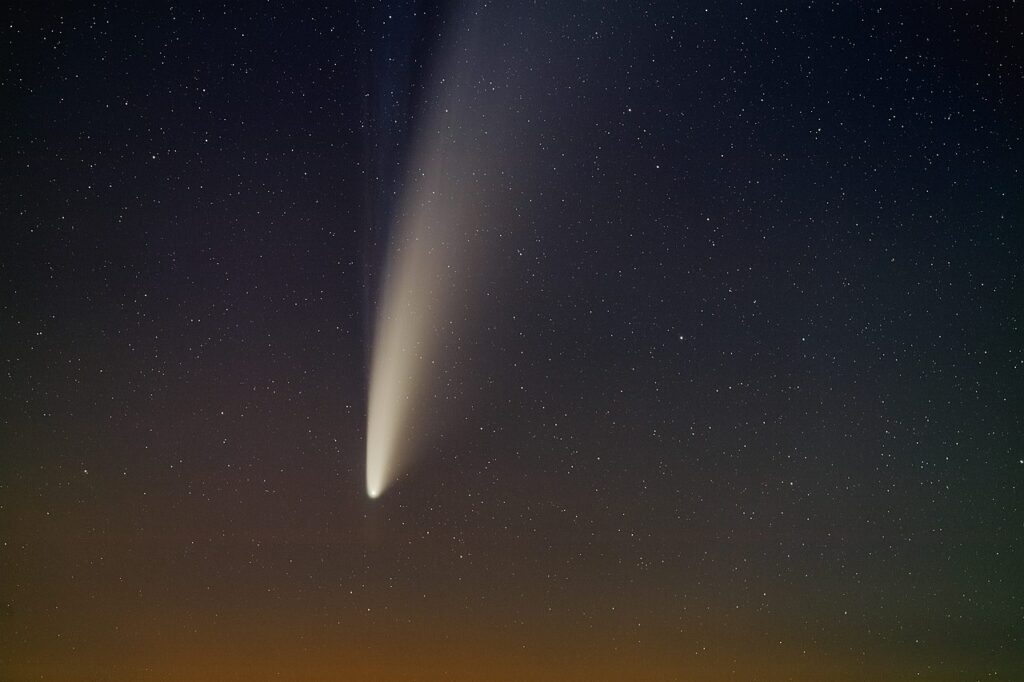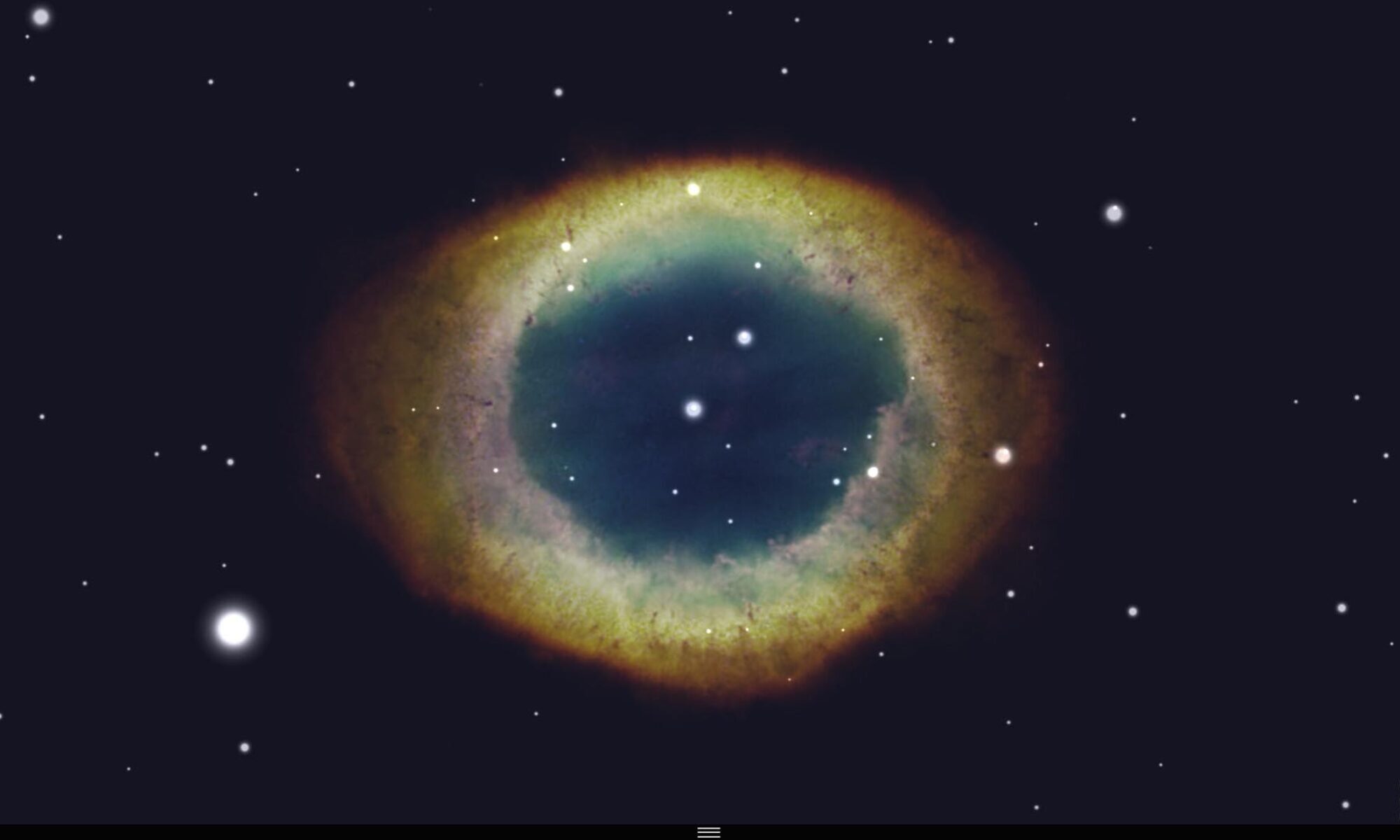C/2020 F3 (NEOWISE) or Comet NEOWISE is a retrograde comet with a near-parabolic orbit discovered on March 27, 2020, by astronomers using the NEOWISE space telescope. At that time, it was a 10th-magnitude comet, located 2 AU (300 million km; 190 million mi) away from the Sun and 1.7 AU (250 million km; 160 million mi) away from Earth.
By July 2020, it was bright enough to be visible to the naked eye. It is one of the brightest comets in the northern hemisphere since Comet Hale–Bopp in 1997. Under dark skies, it can be clearly seen with the naked eye and might remain visible to the naked eye throughout most of July 2020. Until July 23, as the comet gets further from the Sun it will be getting closer to Earth. As of July 16, the comet is about magnitude 2.
For observers in the northern hemisphere, in the morning, the comet appears low above the north-eastern horizon, below Capella. In the evening, the comet can be seen low in the north-western sky. The comet can be seen in the morning and evening because it is circumpolar from about latitude 45N. The evening view is better. On July 17, Comet NEOWISE will enter the constellation of Ursa Major, below the asterism of the Big Dipper (The Plough). (If Ursa Major was upright, it would be on the right of the Big Dipper, as of July 15th.)
 C/2020 F3 (NEOWISE). Stack of 10 exposures of 30s each. Star Adventurer mount.
C/2020 F3 (NEOWISE). Stack of 10 exposures of 30s each. Star Adventurer mount.
The object was discovered by a team using the NEOWISE space telescope on March 27, 2020. It was classified as a comet on March 31 and named after NEOWISE on April 1. It has the systematic designation C/2020 F3, indicating a non-periodic comet which was the third discovered in the second half of March 2020.
Comet NEOWISE made its closest approach to the Sun (perihelion) on July 3, 2020, at a distance of 0.29 AU (43 million km; 27 million mi). This passage increases the comet’s orbital period from about 4500 years to about 6800 years. Its closest approach to Earth will occur on July 23, 2020, 01:14 UT, at a distance of 0.69 AU (103 million km; 64 million mi) while located in the constellation of Ursa Major.
Seen from Earth, the comet was less than 20 degrees from the Sun between June 11 and July 9, 2020. By June 10, 2020, as the comet was being lost to the glare of the Sun, it was apparent magnitude 7, when it was 0.7 AU (100 million km; 65 million mi) away from Sun and 1.6 AU (240 million km; 150 million mi) away from Earth. When the comet entered the field of view of the SOHO spacecraft’s LASCO C3 instrument on June 22, 2020, the comet had brightened to about magnitude 3, when it was 0.4 AU (60 million km; 37 million mi) away from Sun and 1.4 AU (210 million km; 130 million mi) away from Earth.
By early July, Comet NEOWISE had brightened to magnitude 1, far exceeding the brightness attained by previous comets, C/2020 F8 (SWAN), and C/2019 Y4 (ATLAS). By July, it also had developed a second tail. The first tail is blue and made of gas and ions;. There is also a red separation in the tail caused by high amounts of sodium. The second tail is a golden color and is made of dust, like the tail of Comet Hale–Bopp. This combination resembles comet C/2011 L4 (PANSTARRS). The comet is brighter than C/2011 L4 (PANSTARRS), but not as bright as Hale–Bopp was in 1997. According to the British Astronomical Association, the comet brightened from a magnitude of about 8 at the beginning of June to −2 in early July. This would make it brighter than Hale–Bopp. However, as it was very near to the Sun, it was reported as 0 or +1 magnitude and remained that bright for only a few days. After perihelion, the comet began to fade at about the same rate as it had previously brightened, dropping to magnitude 2.
On July 13, 2020, a sodium tail was confirmed by the Planetary Science Institute’s Input/Output facility. Sodium tails have only been observed in very bright comets like Hale–Bopp and sungrazer C/2012 S1 (ISON).
From the infrared signature Joseph Masiero estimates the diameter of the comet nucleus to be approximately 5 km (3 mi). The nucleus is similar in size to Comet Hyakutake and many short-period comets such as 2P/Encke, 7P/Pons-Winnecke, 8P/Tuttle, 14P/Wolf, and 19P/Borrelly. By July 5, NASA’s Parker Solar Probe had captured an image of the comet, from which astronomers also estimated the diameter of the comet nucleus at approximately 5 km.
To locate the comet in WinStars, use the Search dialog box and type c/2020 f3
Source : Wikipedia




